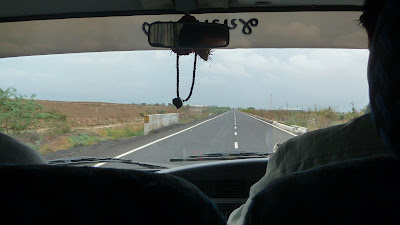DAY 1
September 6,7 and 8 were days that were almost as perfect as they get. I traveled in the Nandini Van, which is a bus equipped with all sorts of facilities, with the Learning Journey group from the UK and some Manav Sadhna staff and volunteers, and Jayeshbhai, co-founder of Manav Sadhna. Amal, Biney, Nishma, me, and a few others sat on one part of the bus while the rest of the Learning Journey group sat in the other half singing as loudly as possible.
First, we stopped in a small village, where they had prepared a large lunch for us--the whole village was waiting outside and had set up cots with quilts on them for us to sit on under the shade of trees. They served us with love and we ate to our stomachs' content (well, actually, probably more than our stomachs were content to eat, which tends to happen a lot in India) and we served them after we were done eating. Then, we talked to the whole small village which had gathered and went to see their organic farm--children grabbed our hands and took us there. They picked us some fresh beans to eat and raced around the farm. Then, we wall went to the town well, where Harry jumped in and Dharmesh and Biney proceeded to get me and another girl soaking wet. No worries though, in the September Gujarati heat, we dried up within half an hour.
When we reached the village (gaam) in which we were to stay for the next two nights, Pimpal, hundreds of its residents gathered around the bus and car which we arrived in, playing dholaks and welcoming us with kankoo and rice tilaks on our foreheads. Jayeshbhai spoke to the village on the stage which was located on a large open ground in the village, and our host families came to take us to their homes.
...lots more later...






















































